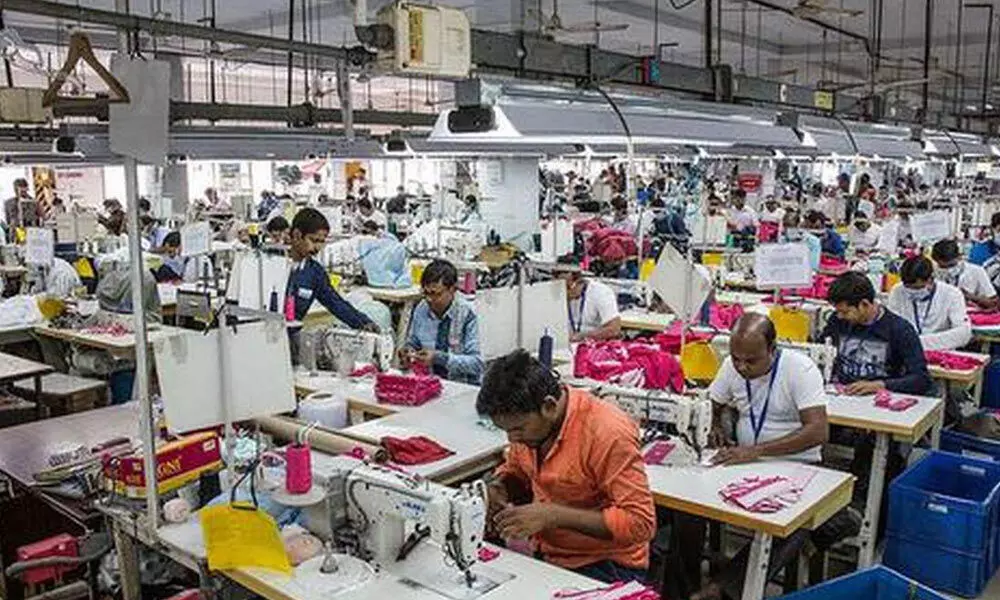Apparel ind set for double-digit growth
Higher discretionary spending, availability of products, brand consciousness, and increasing urbanisation and digitization driving demand
image for illustrative purpose

Mumbai: Indian apparel industry is expected to grow at a CAGR of 10 per cent between FY20 and FY25, which will be led by higher discretionary spending, better access/availability of products, brand consciousness and increasing urbanisation and digitisation. Of course, the growth will be despite near-term demand headwinds stemming from Covid-19.
'We expect the apparel industry to grow at a CAGR of 10 per cent (branded apparel CAGR of 13 per cent) between FY20-25E led by higher discretionary spending, better access/availability of products, brand consciousness and increasing urbanisation and digitisation,' says a study by Systematrix Institutional Equities which has been released early this month.
The share of domestic private consumption in India's GDP has increased to 60 per cent in FY20 from 55 per cent in FY15. Despite near-term demand headwinds stemming from Covid-19, the country's mid-to-long-term consumption growth story remains intact driven by personal income growth, steady and dispersed urbanisation, favourable demographics, democratisation of the internet and evolving consumer attitudes.
India's urbanisation levels have increased to 35 per cent in FY20 from 31 per cent in FY10 to 35 per cent in FY20. After evolving considerably with higher disposable incomes, internet penetration and support infrastructure, Rurban (Rural urban) clusters are expected to drive the next wave of retail apparel growth. Over the last decade, small towns/cities have received 5x more investments in retail infrastructure than metros/tier-1 cities. This has led to apparel retailers expanding their horizons to small towns with high aspirational quotients and rising disposable incomes. These markets also provide the opportunity to redefine store formats given lower real estate costs. After establishing a strong presence in metros/tier-1 cities, large retailers are evaluating optimal penetration in Rurban markets.
Talking to Bizz Buzz, Rahul Mehta, chief mentor of Clothing Manufacturers' Association of India (CMAI) said, "Achieving 10 per cent CAGR for next few years is possible subject to certain issues which are taken care of."
Those issues include that there was no much impact of the apprehended third wave of the pandemic in the near future, GST Council doesn't increase GST on clothes costing below Rs 1,000 which comprise 80 per cent of garment sales and finally, the Council avoids going for a very few slabs of taxes, he said.
Growing share of private labels – a win-win for retailers and consumers: Private labels have gained traction in physical and online stores as they offer value-formoney to consumers and higher margins (1.5-2x external brands) to retailers. The private label strategy gives retailers control over procurement, logistics, designing, marketing, promotion and pricing, and thereby enables them to offer differentiated products at an economical price. Private labels have the potential to become self-sustaining brands through a loyal consumer base. Prominent apparel retailers with a substantial share of private labels are Zudio and Westside at 100 per cent VMART at 65-70 per cent, Pantaloons (ABFRL) at 60-65 per cent, the report says.
Private labels have gained traction in physical and online stores as they offer value-for-money to consumers and higher margins (1.5-2x external brands) to retailers. The private label strategy gives retailers control over procurement, logistics, designing, marketing, promotion and pricing, and thereby enables them to offer differentiated products at an economical price. Private labels have the potential to become self-sustaining brands through a loyal consumer base. Prominent apparel retailers with a substantial share of private labels are Zudio and Westside (TRENT) at ~100, VMART at 65-70 per cent, Pantaloons (ABFRL) at 60-65 per cent. Rise of Phygital – an amalgamation of e-commerce and physical stores: Connecting with customers at the right time and place plays a vital role in driving sales for any business.
This along with growth in online fashion has led to the rising importance of omni-channels among apparel retailers. To circumvent disruption from emerging brands with e-commerce-focused distribution and social media-led marketing/promotions, retailers are investing in strengthening their omni-channels. This will ensure a better conversion rate for their businesses, reduce inventory duplication and improve store throughput. The closure of crowded places during Covid-19 times amplified the urgency of online marketplaces. Fashion retailers with scale and the agility to embrace this change would benefit from the next leg of growth.

